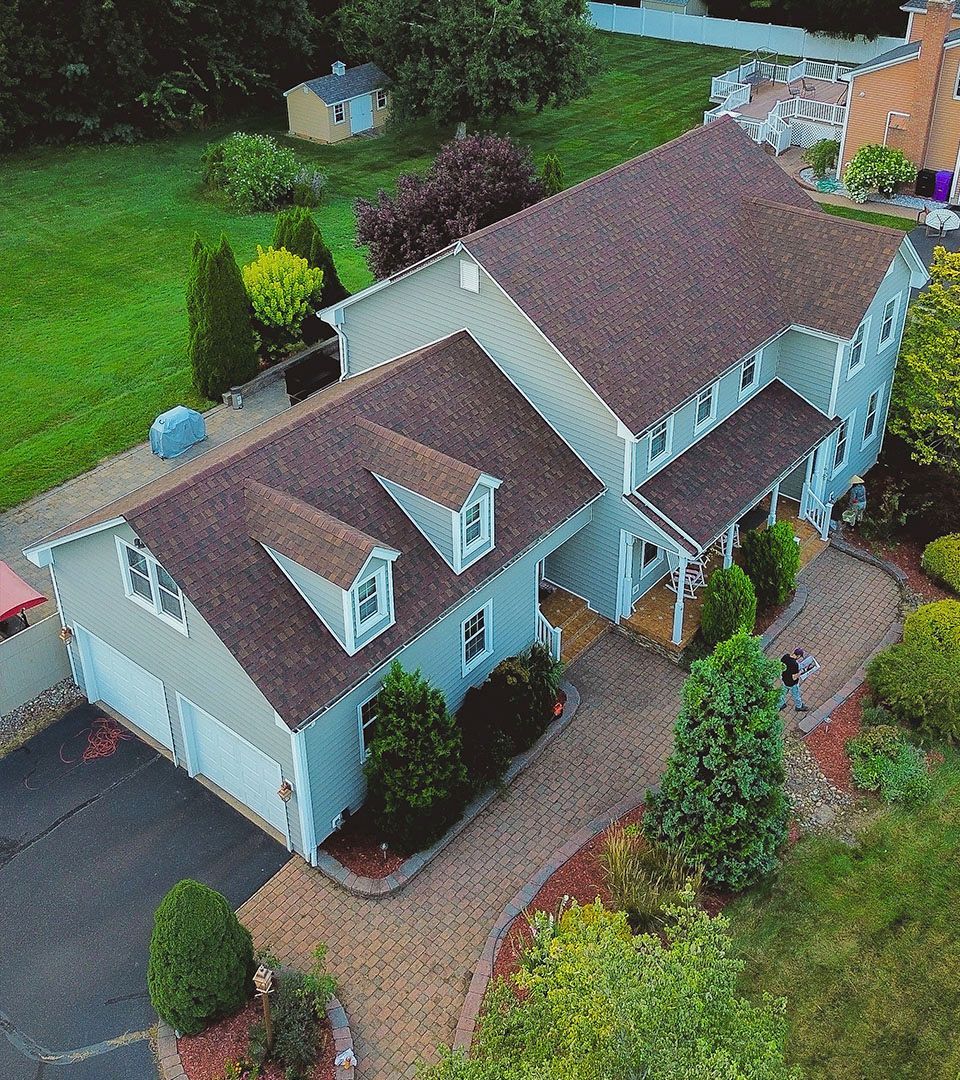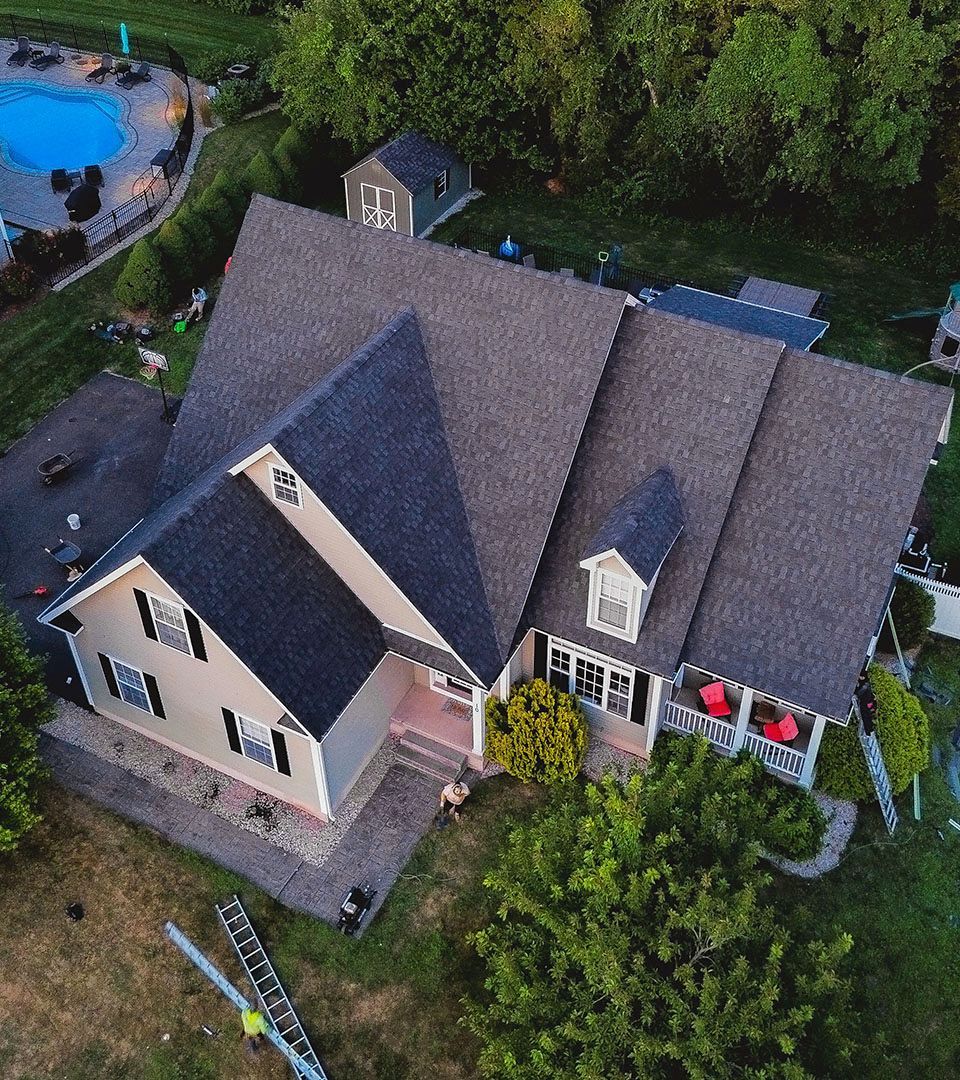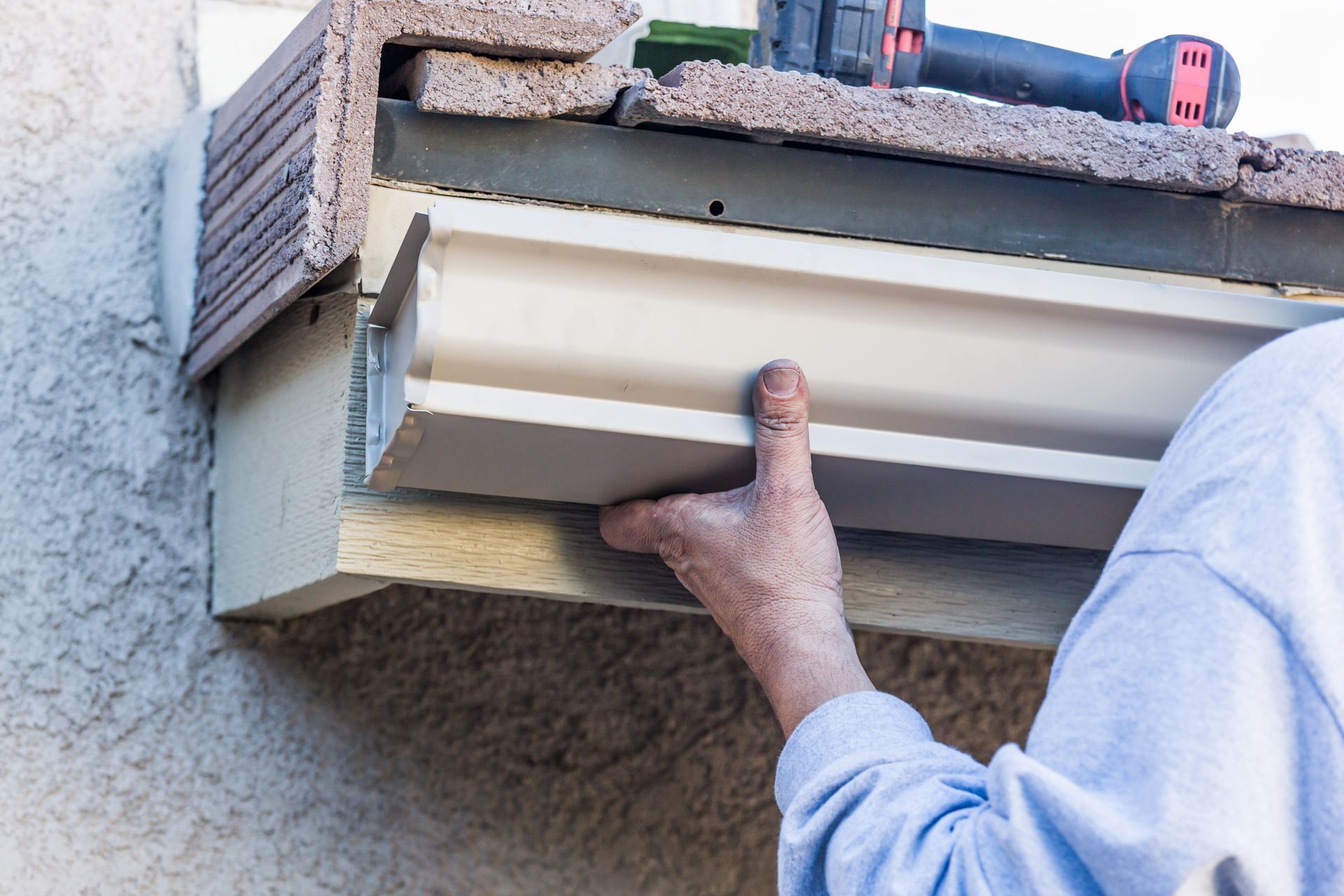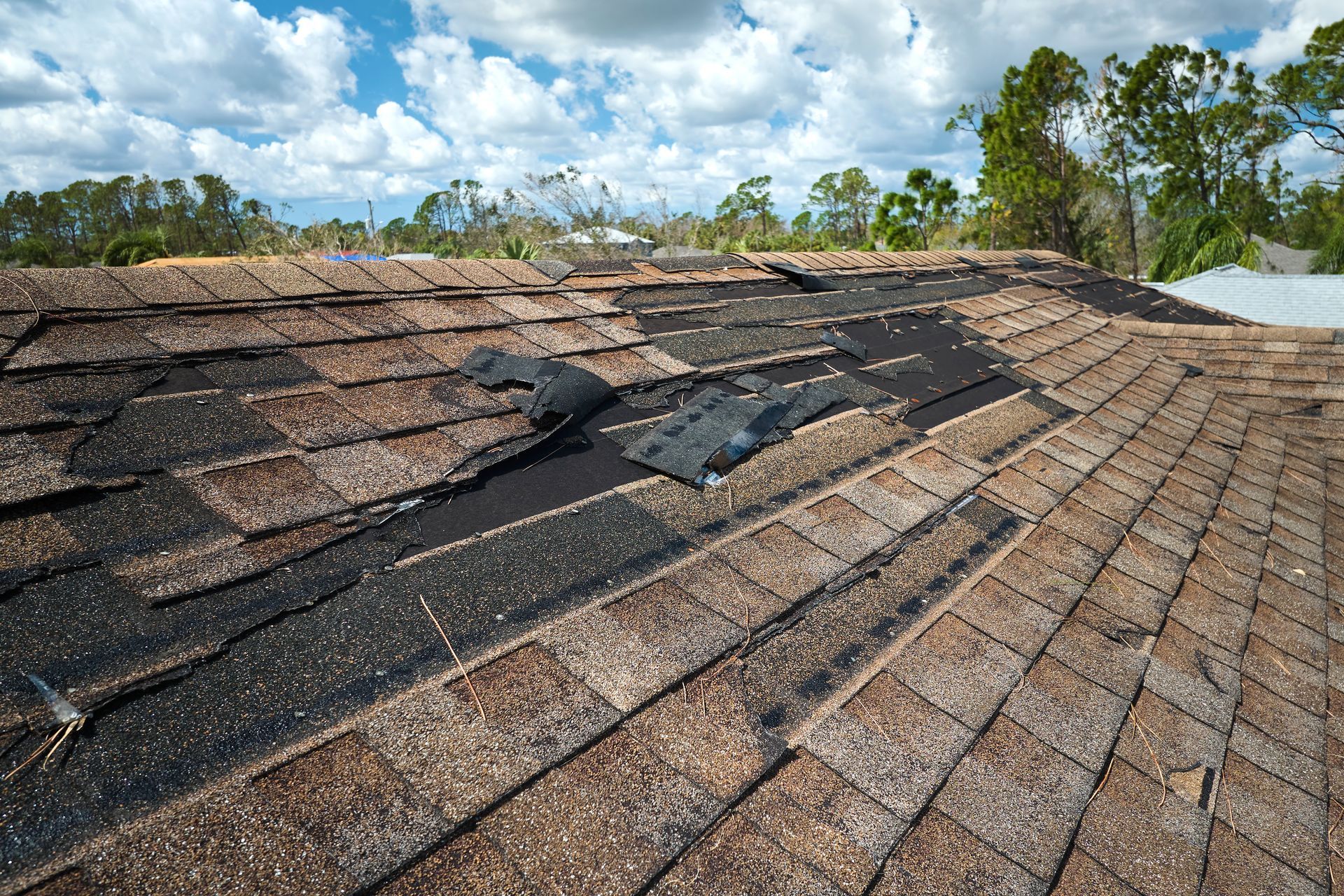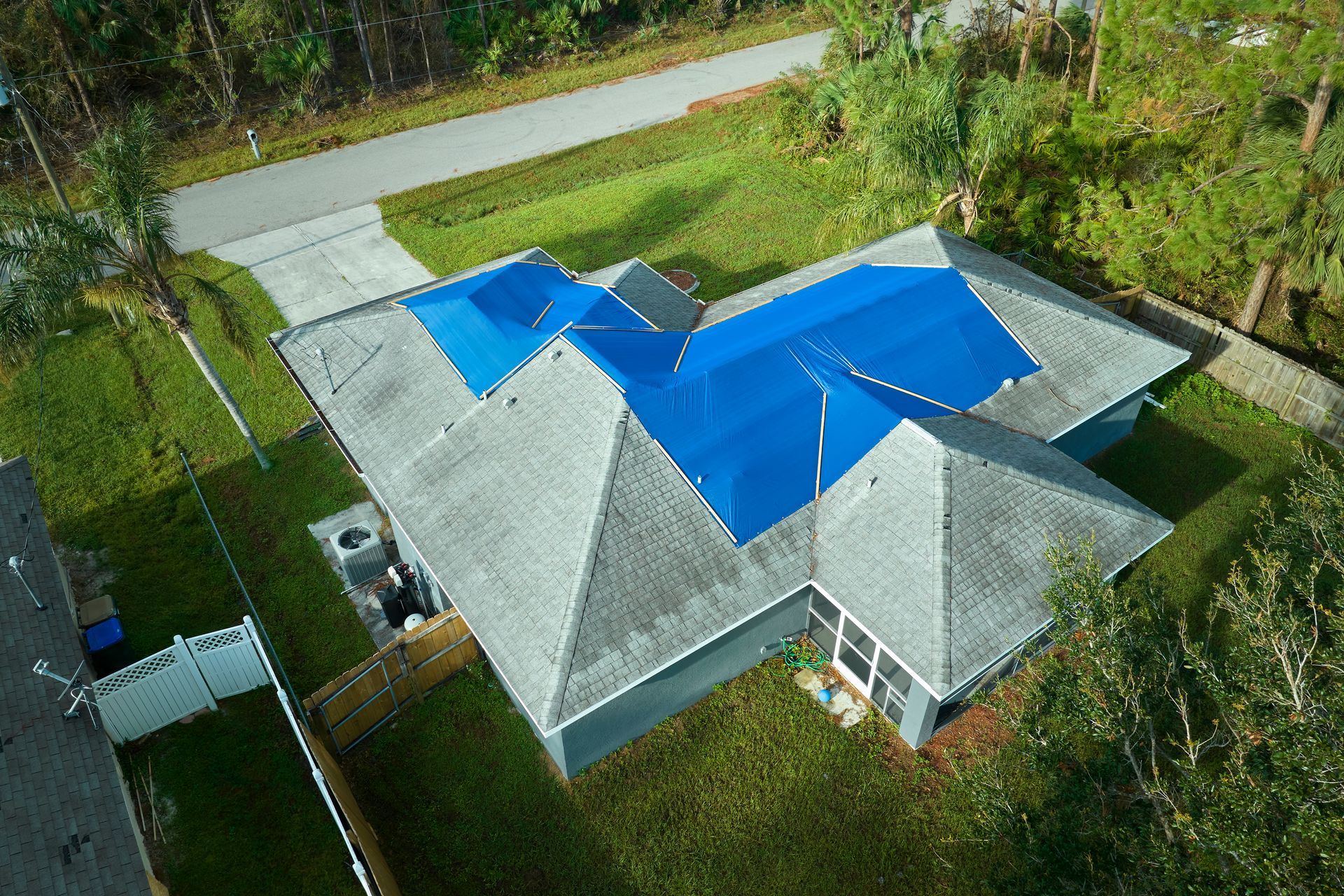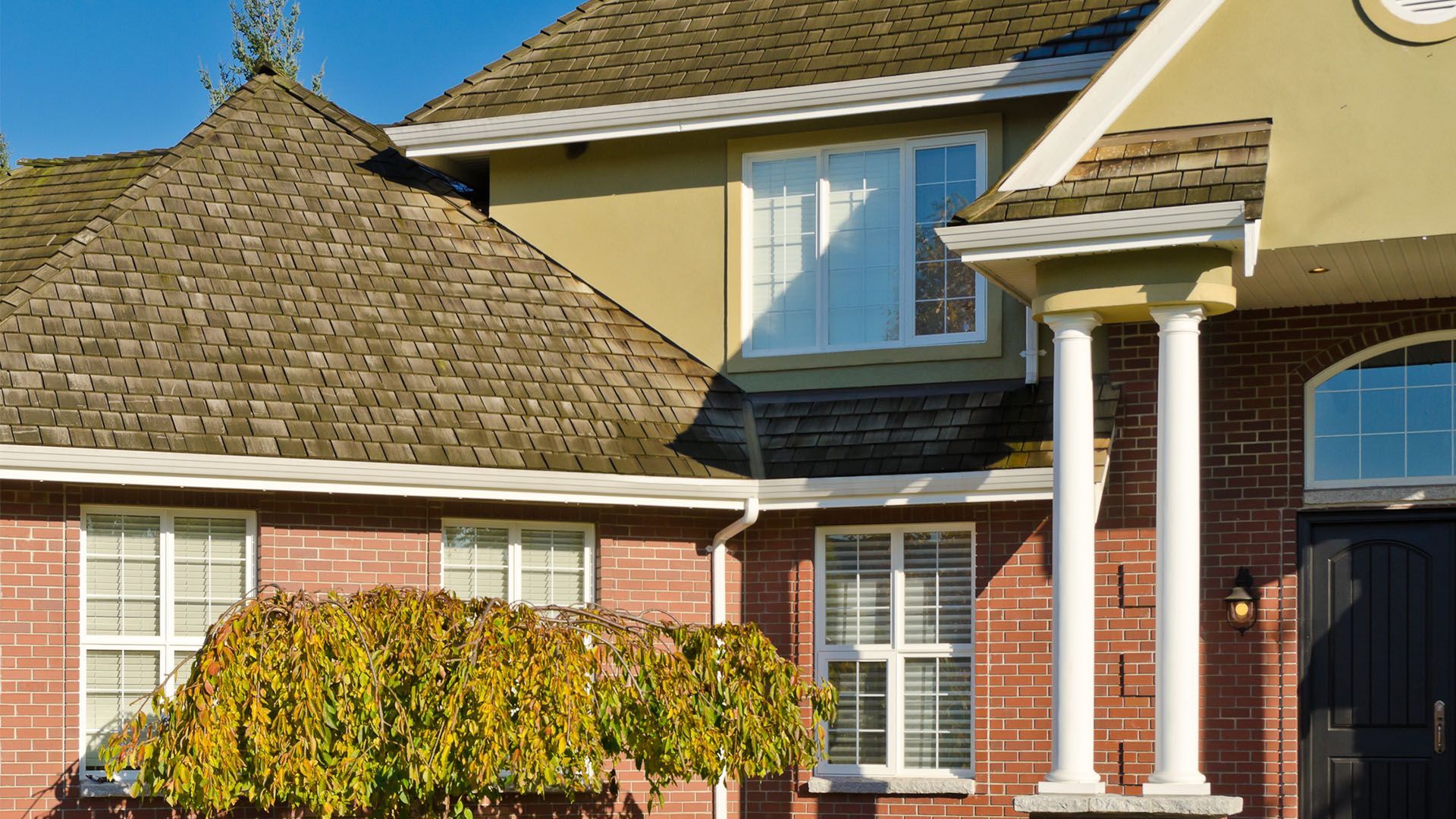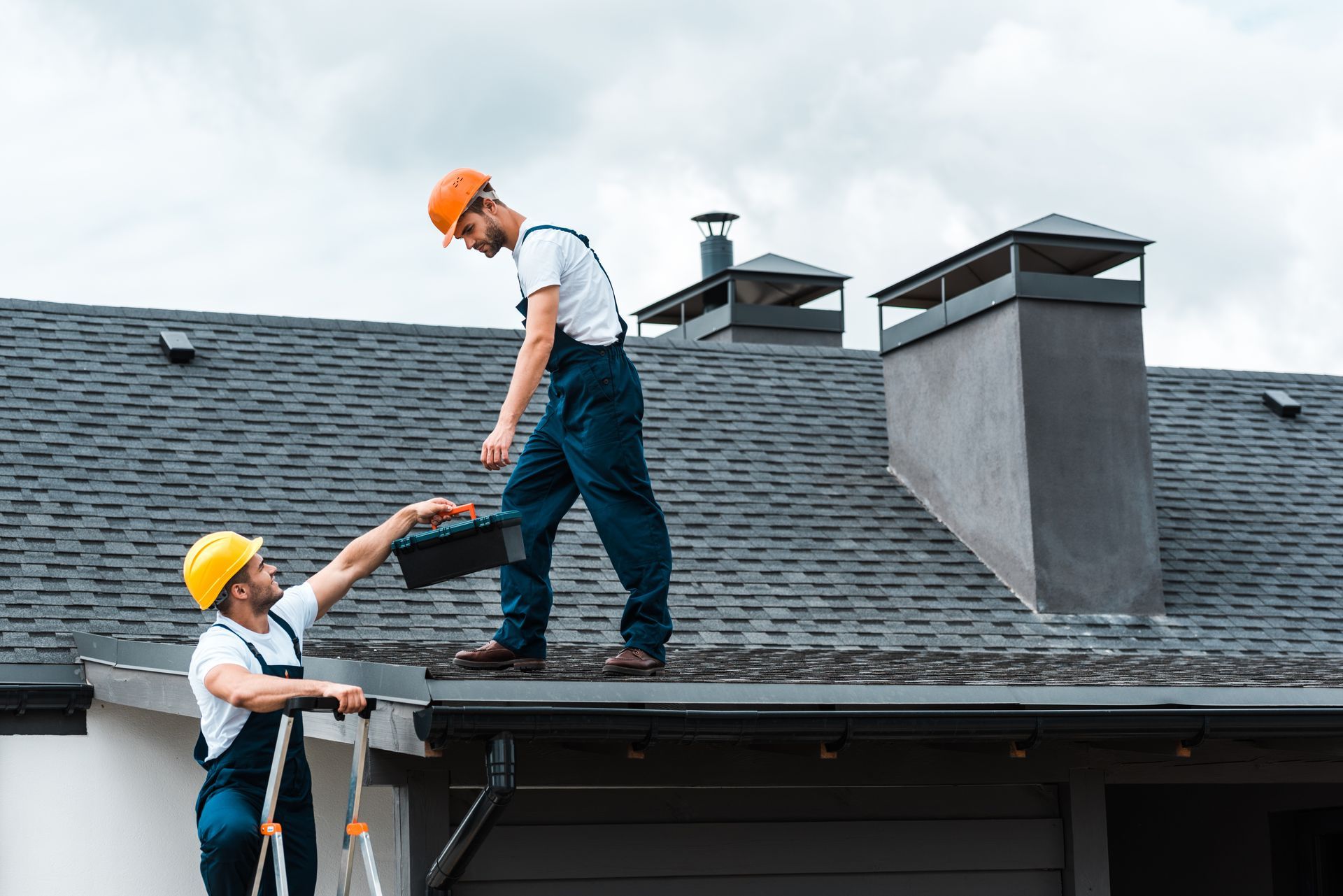Choosing the Right Roof: Best Roofing Materials for the Northeast U.S.

Quick answer: For most Northeast homes, architectural asphalt shingles deliver the best balance of cost, durability, and style. If you want longer life and superior performance in snow and wind, choose standing-seam metal. For historic or premium homes, natural slate (or synthetic slate/shake) excels in longevity and freeze-thaw durability. Read on to see which option fits your roof pitch, budget, and climate challenges.
Quick Answer
- Architectural asphalt shingles – Best all-around pick for the Northeast: dependable in winter, available with algae-resistant and higher wind-rating options, cost-effective over 20–30 years.
- Standing-seam metal – Excellent for heavy snow, ice-dam resistance (with proper underlayment), and high winds; long lifespan and low maintenance.
- Natural slate – Benchmark for longevity and cold-climate performance; requires strong structure and a skilled installer.
- Synthetic/composite slate or shake – Slate look without the weight; good freeze-thaw durability and wind resistance.
- Cedar shake (selective use) – Beautiful, but needs diligent maintenance and ventilation; best with treatments and the right site conditions
- Low-slope roofs – Consider modified bitumen, TPO, or EPDM membranes designed for cold climates and proper drainage.
At-a-Glance Comparison
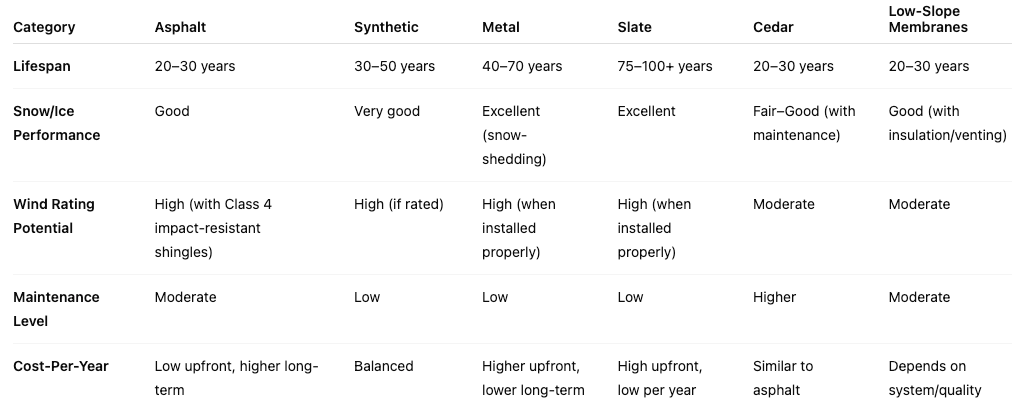
What Makes the Northeast Tough on Roofs
- Snow load & freeze–thaw cycles that stress fasteners and materials
- Ice dam formation from heat loss through the attic
- Nor’easter wind events and
coastal salt-air corrosion near shorelines
- Temperature swings, humidity, and algae growth (look for algae-resistant products)
How to Choose: Key Decision Criteria
- Lifespan vs. total cost of ownership (cost-per-year, not just day-one cost)
- Wind, impact, and fire ratings suited to storms and tree cover
- Energy efficiency & ventilation: balanced
ridge vents and soffit vents, attic air-sealing, and insulation to prevent ice dams
- Weight & structure: slate and some metal profiles require checking framing loads and
snow load building codes
- Local codes & historic districts that may dictate materials or colors
- Maintenance appetite & aesthetics that fit your neighborhood and home style
Best Roofing Materials for the Northeast (Deep Dive)
Architectural Asphalt Shingles
- Best for: Budget-to-midrange homes needing reliable, versatile performance.
- Why it works: Widely available, proven in cold climates, and can be specified with
algae-resistant granules,
Class 4 impact resistance, and high
wind ratings.
- Considerations: Proper ice and water shield underlayment at eaves, valleys, and penetrations is essential. Expect 20–30 years with quality installation and ventilation.
Metal Roof
- Best for: Long-term owners, snow-shedding roofs, high-wind areas.
- Why it works: Panels interlock to resist wind uplift; slick surface helps shed snow and reduce ice buildup. Compatible with robust underlayments for
ice dam prevention.
- Considerations: Add snow guards over entries/walkways. Choose profiles and coatings suited to coastal environments to limit corrosion. Lifespan 40–70 years with minimal maintenance.
Natural Slate
- Best for: Historic and premium homes where longevity and classic aesthetics matter.
- Why it works: Exceptional
freeze–thaw durability and fire resistance; individual tiles can be repaired.
- Considerations: Heavy—verify structure and framing. Requires skilled installers familiar with flashing and roof pitch and drainage best practices. Lifespan is often 75–100+ years.
Synthetic/Composite Slate or Shake
- Best for: Slate/cedar look without structural upgrades.
- Why it works: Lighter weight, strong wind/impact ratings, good UV and algae resistance, stable in temperature swings.
- Considerations: Follow manufacturer fastening patterns and ventilation requirements; lifespans often 30–50 years with solid warranties.
Cedar Shake (Selective Use)
- Best for:
Homeowners prioritizing natural aesthetics and willing to maintain.
- Why it works: Natural insulation value and timeless look when properly ventilated and treated.
- Considerations: Needs periodic treatments, vigilant moss/mold control, and clear airflow beneath the shakes. Performance can vary in humid, shaded sites.
Low-Slope/Flat Roofs
- Options:
Modified bitumen,
TPO,
EDPM.
- Why they work: Engineered seams and membranes that handle ponding risk in cold weather.
- Considerations: Ensure tapered insulation for drainage, high-quality flashing, and waterproof roofing underlayment details at transitions.
How Long Do Roofing Materials Last in the Northeast?
- Installation quality, balanced ventilation, and routine maintenance are as important as the material choice.
- Expect the ranges above; storms, debris, attic moisture, and poor flashing can shorten service life, while proactive care extends it.
When to Replace Your Roof (Signs & Symptoms)
- Curling, cracked, or missing shingles; widespread granule loss
- Persistent
ice dams,
leaks, ceiling stains, or attic daylight
- Soft or sagging decking, rusted or failed flashing, loose fasteners
- Age and warranty milestones: if you’re near the end of term and repairs are frequent, plan for replacement
Cost vs. Longevity: Making the Math Work
Simple example:
- Roof A costs $12,000 and lasts ~20 years ⇒
$600/yr
- Roof B costs $20,000 and lasts ~40 years ⇒
$500/yr
- Even with a higher upfront price, longer-life systems can win on cost-per-year—especially if they reduce maintenance and insurance claims from
storm damage.
Energy Efficiency & Ice-Dam Prevention
- Air-seal the attic to stop warm air leaks that melt snow unevenly.
- Install
ridge and soffit vents for balanced airflow; keep baffles clear.
- Meet or exceed local
attic insulation requirements.
- Use
ice and water shields at eaves (often 2 rows in cold zones), in valleys, and around chimneys/vents.
- Specify light-reflective or
energy-efficient roofing materials where appropriate, and ensure
gutters stay clear.
Installation Essentials
- Choose a certified contractor with cold-climate experience and stellar flashing details.
- Confirm
manufacturer vs. workmanship warranties and what voids them (ventilation, multiple layers, etc.).
- Pull permits and schedule inspections; verify
snow load and
wind rating compliance for your municipality.
- For coastal sites, confirm fasteners and metals are rated for salt exposure.
Maintenance Checklist (Seasonal)
- Fall: Clean gutters, check ridge/soffit vents, trim back branches.
- Winter: Monitor ice buildup; use roof rakes safely where needed.
- Spring: Inspect for lifted shingles, flashing gaps, storm damage, and algae/moss; address small issues before they spread.
- Anytime: Keep debris off the roof and ensure downspouts drain away from the foundation.
Recommendations by Home Type & Budget
- Budget/starter homes: Architectural asphalt with upgraded underlayment and high wind rating.
- Forever homes: Standing-seam metal or synthetic slate for lower cost-per-year and durability.
- Historic districts: Natural slate (or approved synthetic) to meet aesthetic guidelines
- Low-slope additions/rowhomes: TPO/EPDM with tapered insulation and robust flashing.
Call to Action
Ready to compare durable roofing options for your home? Get a fast on-site assessment, an apples-to-apples quote, and a clear plan to maximize lifespan, control ice dams, and improve energy efficiency—tailored to your Northeast climate and budget.
Frequently Asked Questions
Do darker roofs help melt snow?
Slightly, on sunny days—but insulation and ventilation are far more important for ice-dam control.
Will metal roofs cause dangerous snow slides?
They can shed snow quickly; install snow guards above entries and walkways to manage release.
Are solar shingles practical in the Northeast?
They can work, but traditional panels on a durable roof (metal, asphalt, or slate) often deliver better efficiency and serviceability.
Can you roof over existing shingles?
Sometimes allowed, but it may void warranties, hide deck problems, add weight, and reduce shingle life. Full tear-off is usually the better long-term choice.
How often should a roof be inspected?
At least once a year and after major storms. Early detection prevents leaks and structural damage.

